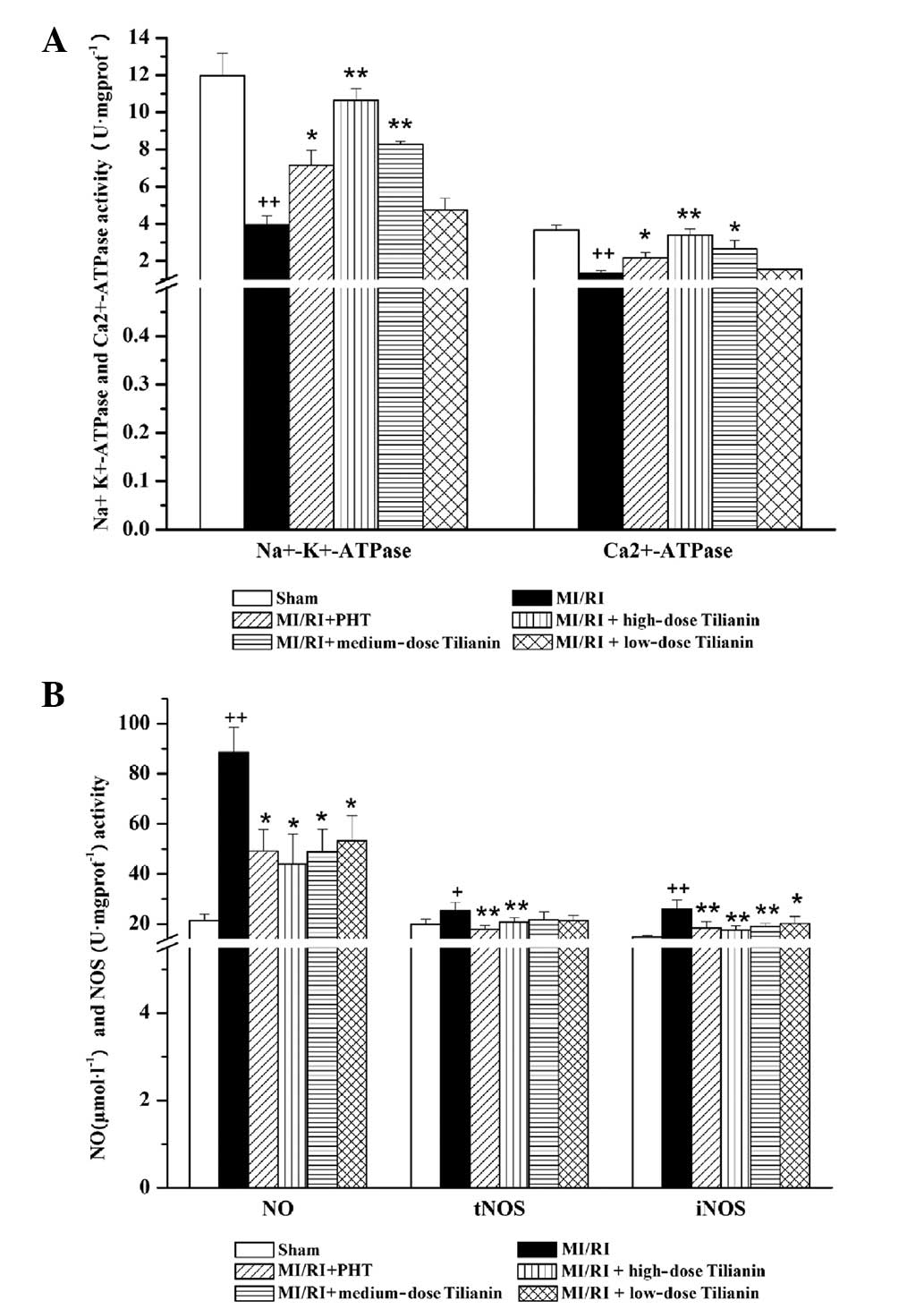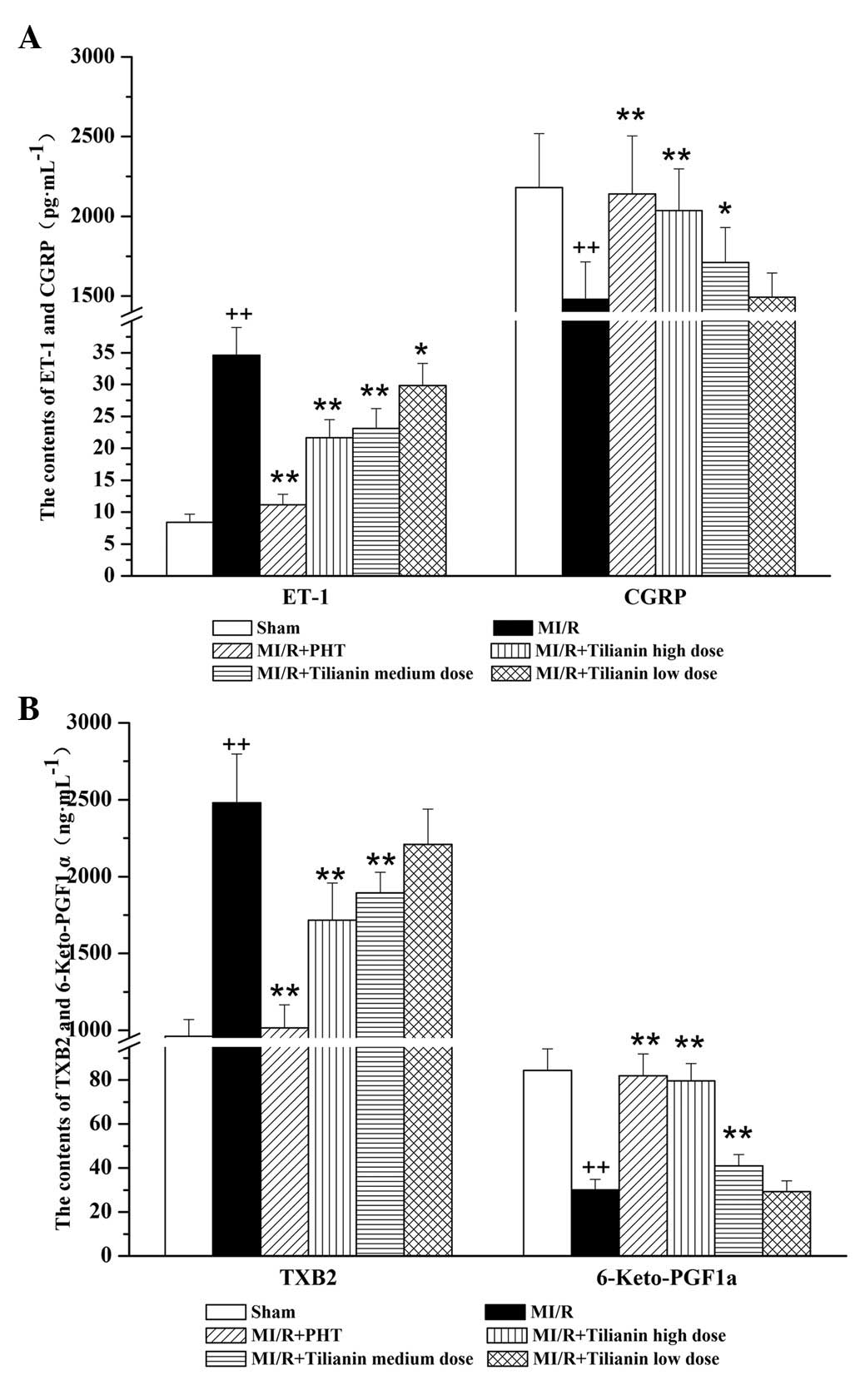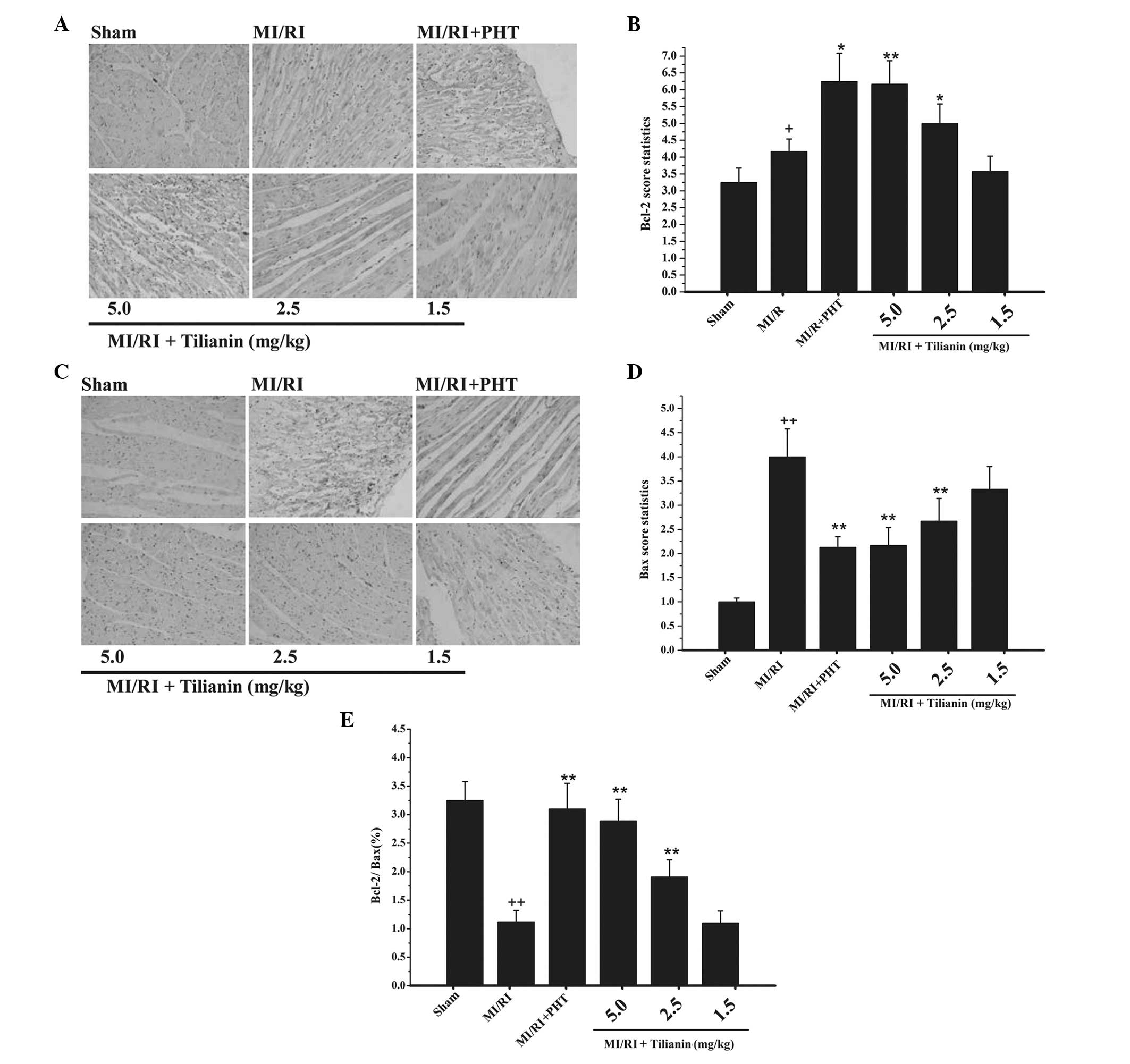|
1
|
Kreatsoulas C and Anand SS: The impact of
social determinants on cardiovascular disease. Can J Cardiol.
26:8C–13C. 2010. View Article : Google Scholar : PubMed/NCBI
|
|
2
|
Hausenloy DJ and Yellon DM: New directions
for protecting the heart against ischemia-reperfusion injury:
targeting the Reperfusion injury Salvage Kinase (RISK)-pathway.
Cardiovasc Res. 61:448–460. 2004. View Article : Google Scholar : PubMed/NCBI
|
|
3
|
Ambrosio G and Tritto I: Reperfusion
injury: experimental evidence and clinical implications. Am Heart
J. 138:S69–S75. 1999. View Article : Google Scholar : PubMed/NCBI
|
|
4
|
Yellon DM and Baxter GF: Protecting the
ischemic and reperfused myocardium in acute myocardial infarction:
distant dream or near reality? Heart. 83:381–387. 2000. View Article : Google Scholar : PubMed/NCBI
|
|
5
|
Li J, Zhang H and Zhang C: Role of
inflammation in the regulation of coronary blood flow in ischemia
and reperfusion: mechanisms and therapeutic implications. J Mol
Cell Cardiol. 52:865–872. 2012. View Article : Google Scholar
|
|
6
|
Gottlieb RA: Cell death pathways in acute
ischemia/reperfusion injury. J Cardiovasc Pharmacol Ther.
16:233–238. 2011. View Article : Google Scholar : PubMed/NCBI
|
|
7
|
Koenitze JR and Freeman BA: Redox
signaling in inflammation: interactions of endogenous electrophiles
and mitochondria in cardiovascular disease. Ann NY Acad Sci.
12:45–52. 2010. View Article : Google Scholar
|
|
8
|
Lakshmi SV, Padmaja G, Kuppusamy P and
Kutala VK: Oxidative stress in cardiovascular disease. Indian J
Biochem Biophys. 46:421–440. 2009.
|
|
9
|
Liou SF, Ke HJ, Hsu JH, et al:
San-Huang-Xie-Xin Tang prevents rat hearts from
ischemia/reperfusion-induced apoptosis through eNOS and MAPK
pathways. Evid Based Complement Alternat. 2011:9150512011.
|
|
10
|
Feng Changgen and Li Qiong: The research
of Dracocephalum moldavuca L. chemical constituents and
pharmacological activities. J Tradit Chin Med. 25:1552003.
|
|
11
|
Yuan Yong, Xing Jian Guo, Zhang Yong Jun,
et al: Determination the content of tilianin in Dracocephalum
moldavuca L. by HPLC. Chin J Exp Tradit Med Formulae. 16:68–69.
2010.
|
|
12
|
Nam KH, Choi JH, Seo YJ, et al: Inhibitory
effects of tilianin on the expression of inducible nitric oxide
synthase in low density lipoprotein receptor deficiency mice. Exp
Mol Med. 38:445–452. 2006. View Article : Google Scholar : PubMed/NCBI
|
|
13
|
Guo Xinhong, Cao Wenjiang, Fan Xinmei, et
al: The protective effects of Tilianin on myocardial
ischemia-reperfusion injury in rats. Chin J Exp Tradit Med
Formulae. 13:169–172. 2013.
|
|
14
|
Zhao Q, Shao L, Hu X, Wu G, et al: Lipoxin
A4 preconditioning and postconditioning protect
myocardial ischemia/reperfusion injury in rats. Mediators Inflamm.
2013:2313512013.
|
|
15
|
Wei Q, Yin Y, Xi M, et al: Antioxidant
properties of magnesium lithospermate B contribute to the
cardioprotection against myocardial ischemia/reperfusion injury in
vivo and in vitro. J Tradit Chin Med. 33:85–91. 2013. View Article : Google Scholar
|
|
16
|
Ahmed LA, Salem HA, Attia AS and Agha AM:
Pharmacological preconditioning with nicorandil and pioglitazone
attenuates myocardial ischemia/reperfusion injury in rats. Eur J
Pharmacol. 663:51–58. 2011. View Article : Google Scholar : PubMed/NCBI
|
|
17
|
Sun C, Liu C, Li S, et al: Overexpression
of GEFT, a Rho family guanine nucleotide exchange factor, predicts
poor prognosis in patients with rhabdomyosarcoma. Int J Clin Exp
Pathol. 7:1606–1615. 2014.PubMed/NCBI
|
|
18
|
Zhao J, Xue W and Liang S: Protective
effects of dracocephalum moldavica extracts on
hypoxia/reoxygenation injury of cardiomyocytes in cultured neonatal
rat. J Zhenzhou University (Med Sci). 2010:485–487. 2010.
|
|
19
|
Fan XM, Cao WJ, Xing JG, et al: Study on
the protective effect of Dracocephalum total flavones against
myocardial ischemia-reperfusion injury in rats. Chin Tradit Patent
Med. 8:1625–1629. 2013.(In Chinese).
|
|
20
|
Rajadurai M and Stanely Mainzen Prince P:
Preventive effect of naringin on cardiac markers,
electrocardiographic patterns and lysosomal hydrolases in normal
and isoproterenol-induced myocardial infarction in Wistar rats.
Toxicol. 230:178–188. 2007. View Article : Google Scholar
|
|
21
|
Tian D, Dmitrieva RI, Doris PA, et al:
Protein kinase M zeta regulation of Na/K ATPase: a persistent
neuroprotective mechanism of ischemic preconditioning in
hippocampal slice cultures. Brain Res. 1213:127–139. 2008.
View Article : Google Scholar : PubMed/NCBI
|
|
22
|
Yorozuya T, Adachi N, Dote K, et al:
Enhancement of Na+K+-ATPase and
Ca2+-ATPase activities in multi-cycle ischemic
preconditioning in rabbit hearts. Eur J Cardiothorac Surg.
26:981–987. 2004. View Article : Google Scholar : PubMed/NCBI
|
|
23
|
Yang G, Fang Z, Liu Y, et al: Protective
effects of Chinese traditional medicine Buyang Huanwu decoction on
myocardial injury. Evid Based Complement Alternat Med.
2011:9303242011. View Article : Google Scholar :
|
|
24
|
Razavi HM, Hamilton JA and Feng Q:
Modulation of apoptosis by nitric oxide: implications in myocardial
ischemia and heart failure. Pharmacol Ther. 106:147–162. 2005.
View Article : Google Scholar : PubMed/NCBI
|
|
25
|
Liu YN, Zhou ZM and Chen P: Evidence that
hydroxysafflor yellow A protects the heart against
ischaemia-reperfusion injury by inhibiting mitochondrial
permeability transition pore opening. Clin Exp Pharmacol Physiol.
35:211–216. 2008.
|
|
26
|
Benigni A, Perico N and Remuzzi G:
Endothelin antagonists and renal protection. J Cardiovasc
Pharmacol. 35(4 Suppl 2): S75–S78. 2000. View Article : Google Scholar : PubMed/NCBI
|
|
27
|
de Hoon JN, Pickkers P, Smits P, et al:
Calcitonin gene-related peptide: exploring its vasodilating
mechanism of action in humans. Clin Pharmacol Ther. 73:312–321.
2003. View Article : Google Scholar : PubMed/NCBI
|
|
28
|
Ji L, Fu F, Zhang L, Liu W, Cai X, et al:
Insulin attenuates myocardial ischemia/reperfusion injury via
reducing oxidative/nitrative stress. Am J Physiol Endocrinol Metab.
298:E871–E880. 2010. View Article : Google Scholar : PubMed/NCBI
|
|
29
|
Moudgil R, Menon V, Xu Y, et al:
Postischemic apoptosis and functional recovery after angiotensin II
type 1 receptor blockade inisolated working rat hearts. J
Hypertens. 19:1121–1129. 2001. View Article : Google Scholar : PubMed/NCBI
|
|
30
|
Chen Z, Chua CC, Ho YS, et al:
Overexpression of Bcl-2 attenuates apoptosis and protects against
myocardial I/R injury in transgenic mice. Am J Physiol Heart Circ
Physiol. 280:H2313–H2320. 2001.PubMed/NCBI
|
|
31
|
Kumar D and Jugdutt BI: Apoptosis and
oxidants in the heart. J Lab Clin Med. 142:288–297. 2003.
View Article : Google Scholar : PubMed/NCBI
|
|
32
|
Nishihara M, Miura T, Miki T, et al:
Modulation of the mitochondrial permeability transition pore
complex in GSK-3beta-mediated myocardial protection. J Mol Cell
Cordial. 43:564–570. 2007. View Article : Google Scholar
|
|
33
|
Zhang Q, Xiang J, Wang X, et al:
Beta(2)-adrenoceptor agonist clenbuterol reduces infarct size and
myocardial apoptosis after myocardial ischaemia/reperfusion in
anaesthetized rats. Br J Pharmacol. 160:1561–1572. 2010. View Article : Google Scholar : PubMed/NCBI
|


















